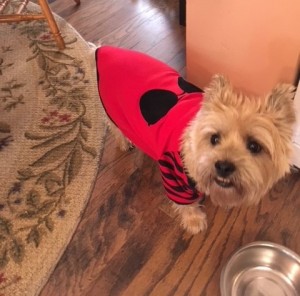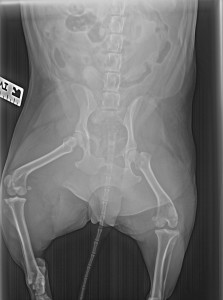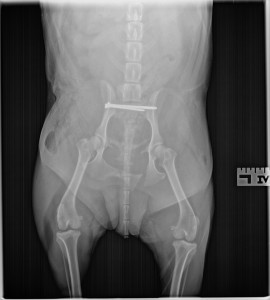-
Recent Posts
Archives
- October 2022
- August 2022
- May 2022
- March 2022
- January 2022
- December 2021
- September 2021
- July 2021
- June 2021
- May 2021
- April 2021
- February 2021
- January 2021
- November 2020
- October 2020
- September 2020
- June 2020
- April 2020
- March 2020
- February 2020
- January 2020
- December 2019
- November 2019
- October 2019
- September 2019
- June 2019
- March 2019
- February 2019
- January 2019
- December 2018
- November 2018
- October 2018
- August 2018
- July 2018
- June 2018
- May 2018
- April 2018
- March 2018
- February 2018
- January 2018
- December 2017
- November 2017
- October 2017
- September 2017
- August 2017
- July 2017
- June 2017
- May 2017
- April 2017
- March 2017
- February 2017
- January 2017
- December 2016
- November 2016
- August 2016
- July 2016
- June 2016
- May 2016
- April 2016
- March 2016
- February 2016
- January 2016
- December 2015
- November 2015
- October 2015
- September 2015
- August 2015
- July 2015
- June 2015
- May 2015
- April 2015
- March 2015
- December 2014
- June 2014
- May 2014
- April 2014
- November 2013
- September 2013
- August 2013
- July 2013
- June 2013
- May 2013
- March 2013
- January 2013
- November 2012
- October 2012
- July 2012
- December 2011
- November 2011
- October 2011
- September 2011
- August 2011
- July 2011
- June 2011
- May 2011
- April 2011
- March 2011
- February 2011
- January 2011
- December 2010
- November 2010
Categories
NorthStar VETS Cool Case Rudy R
The team at NorthStar VETS is doing innovative and amazing things every day as they work to advance the level of care available to your pet. This series of posts highlights cool cases at NorthStar VETS and the types of things done to save pets and improve their quality of life. These are cases using innovative and cutting-edge medical techniques, and/or stories of pets beating the odds. This is the story of Rudy, a patient of our Surgery team.
About Rudy
Rudy is a fantastic, friendly, and active little dog who had the unfortunate luck of being hit by a pick-up truck after escaping from his yard. As with many dogs that are hit by cars, he sustained significant crush injuries to his hind end. Some injuries that can be associated with this type of trauma include fractures (pelvic, hindlimb, and spinal), neurologic injury resulting in loss of limb function or incontinence, bladder rupture or leakage, muscle tearing and/or bruising, and skin wounds. When pets are presented to the hospital after trauma, we are initially focused on life-saving stabilization such as treating for shock, bleeding, breathing trouble, and metabolic alterations. After pets are stable, we may then be able to care for other injuries such as fractures.
Rudy’s Condition
Rudy was fortunate in that he did not sustain any severe life-threatening trauma. His most significant injuries were multiple fractures throughout his pelvis. In animals, the pelvis is made up of multiple bones (pubis, ischium, and ilium.). Depending on the location of the fractures, some injuries may heal well on their own, and others require surgical repair to restore proper alignment and weight-bearing function.
Rudy’s Treatment
Rudy had several fractures including pubic bone fractures, an ischial fracture, and a significantly displaced sacro-iliac separation/luxation (SI luxation.) The sacroiliac joint is where the pelvis (specifically, the ilium) meets the spinal column (sacrum) and it is an important area in that several spinal nerves are in close proximity. Many minimally displaced SI luxations can be treated conservatively with rest so they can heal on their own, but when they are very displaced, it results in lack of support and pain when walking, as well as possible nerve stretching injuries. When appropriately stabilized, most of these injuries have an excellent prognosis.
Rudy’s SI luxation required surgical stabilization. The goal of surgery is to pull the ilium back into position and stabilize it in position to the sacrum, typically with bone screws. The challenges of this surgery are mostly related to the very small area of the sacrum where implants can be placed (the end of the spinal cord with its important nerve roots is often millimeters away from where the screws need to be placed.) To aid in placement of the screws, as well as to minimize soft tissue trauma, Rudy’s surgery was performed under fluoroscopy (“real time” X-ray) in our operating room equipped with a c-arm.  This allowed us to make an inch-long keyhole incision and use X-ray to direct us to the proper location in the small sacrum for screw placement.
This allowed us to make an inch-long keyhole incision and use X-ray to direct us to the proper location in the small sacrum for screw placement.
How Things Went for Rudy
Rudy’s surgery went very well, and he was able to leave the hospital soon after to continue his recovery with his family. At recheck 2 weeks postoperatively, his pet parents noted he was mostly back to normal and feeling great. Rudy was walking normally and he is not expected to have any long-term problems from his injuries.
Learn more about the Surgery service at NorthStar VETS
 Kelly Kraus, VMD, DACVS
Kelly Kraus, VMD, DACVS
Dr. Kraus is originally from Connecticut. She obtained a Bachelor of Science degree from Loyola University in Baltimore, Maryland in 2003 before moving to Philadelphia, where she did molecular genetics research for two years at the University of Pennsylvania. Dr. Kraus then completed veterinary school at the University of Pennsylvania in 2009. After graduating, she completed a rotating internship at Oradell Animal Hospital in Paramus, NJ. She then moved to Texas to complete a one-year internship in surgery at Gulf Coast Veterinary Specialists. She was fortunate to then move back to New Jersey for a three-year residency in surgery at Red Bank Veterinary Hospital, which she completed in 2014.
She is excited to be part of the surgery team at NorthStar VETS. Her special surgical interests include, but are not limited to, wound management and reconstructive surgery, surgical oncology, cardiothoracic surgery, and hepatobiliary surgery. Dr. Kraus also enjoys management of orthopedic conditions. She is trained in the tibial plateau leveling osteotomy (TPLO) for cranial cruciate ligament disease. Outside of work, Dr. Kraus enjoys spending time with her family, cooking, traveling, and helping her local SPCA.
The information presented on this web site is not intended to take the place of your family veterinarian’s advice and is not intended to diagnose, treat, cure or prevent any disease. Discuss this information with your own veterinarian to determine what is right for your pet. All information is intended for your general knowledge only and is not a substitute for medical advice or treatment for specific medical conditions. We can not and do not give you medical advice via this blog. The information contained in this online site and emails is presented in summary form only and intended to provide broad understanding and knowledge. The information should not be considered complete and should not be used in place of a visit, call, consultation or advice of your veterinarian. We do not recommend the self-management of your pet’s health problems.
This entry was posted in Pets, Veterinary Medicine and tagged Kelly Kraus VMD, NorthStar VETS, veterinary surgery. Bookmark the permalink.







Leave a Reply